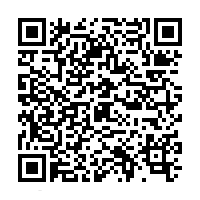QR Codes in Real Estate

Scan this QR code.
It’s amazing how far the real estate industry has come in even 5 short years. Back in 2006, you’d be lucky to find a handful of personal agent websites out there and almost none of them had any form of online home search available. Now, if you’re not blogging, tweeting and social networking, you’re already considered behind the curve. It’s almost like years spent in the proverbial tech dark ages prompted a surge of catching up that has transformed the way agents do business. Now, the latest bit of real estate technology just coming onto the stage are QR codes. The big question is – will this be a fad or are QR codes in real estate the next “big thing”?
While integration of real estate and hand-held GPS units hasn’t really moved forward, we now have smartphone apps that enable map-based home searching and cross-reference with your current location. Lately I have been working with QR codes and how they can be used with real estate. I feel they have some promise to make things easier for buyers searching for information on homes but they come with certain limitations.
First, what are QR codes? A QR code is a two-dimensional bar code that can store information and then be read by hand-held bar code scanners. “QR” stands for Quick Response and the intent is to quickly serve up data without requiring the user to manually type anything in. In order to scan a QR code, the user must have a device with a barcode reader that is capable of recognizing QR codes. This typically takes the form of a smartphone with a built-in camera and a QR scanning app. QR codes have been popular in Japan and South Korea for several years and are now just catching on here in America.
The use of QR codes in real estate is almost limitless. For example, I can put a QR code on the back of my business card and anyone with the capability to read QR codes can imput my contact information directly into their contacts list. QR codes can
also interact with other smartphone capabilities – so for instance, I could put a QR code on a real estate sign that when scanned, would open up a webpage with information about the home. Or if I have a listing flyer about the home, a QR code could link to a digital version of the flyer and allow the user to download the flyer directly to their smartphone. Ultimately, you could put a QR code on the door of a home and buyers can scan the code and be linked to a virtual tour or video tour of the property.
These uses of QR codes seem like excellent ways to make the home shopping process easier and more informative for buyers. However there are a few major limitations. The biggest is the fact that smartphones are still considered a relatively new thing here in America. Current numbers are hard to get but according to the latest surveys, only perhaps 17% of cell phone users have smartphones. Combine this with the fact that not all Americans have cell phones at all and you see where this is going. Industry experts do speculate that 1 in 2 to 1 in 3 cell phone users will have smartphones by the end of 2011 so we be at the beginning of the wave there. However, ultimately the adoption of QR technology by real estate professionals is largely driven by results. If only a small fraction of buyers have smart phones and an even smaller know what QR codes are and a yet smaller have a QR reader and an even smaller fraction care to use them to access real estate data, how can the average Realtor justify the extra tme and money it takes to utilize them?
The answer to this will take a couple years to find. However, agents who like to be on the cutting edge of technology will start inorporating QR codes into real estate soon, if they haven’t already. So the next time you see one of those funny barcodes on a real estate sign or webpage or business card, give it a scan and chck it out – you may be witnessing the future of real estate advertising. Or maybe not 😉
